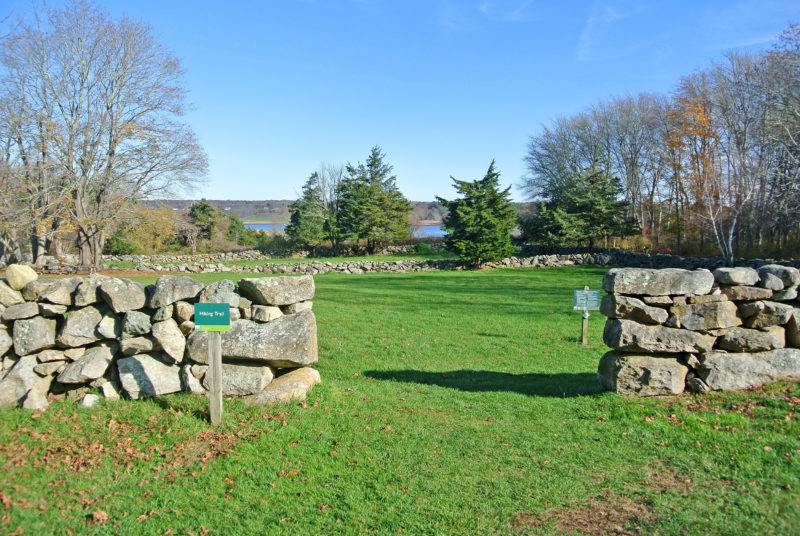Westport Town Farm
History comes to life at Westport Town Farm, a Trustees property that celebrates a Colonial-era farm’s unique past and the vibrant beauty of agricultural life in coastal New England. Visitors of all ages will enjoy the stunning views of rolling farmland here along the banks of the East Branch of the Westport River.
Features

The hiking trails at Westport Town Farm traverse historical stone walls that have been restored by The Trustees, which owns this property.
Westport Town Farm’s history dates back 300 years, when this homestead and farm were first founded. In the mid-1800s, the property became a “poor farm” where the ill or needy could gather for shelter and communal farming. The poor farm operated for over 100 years until 1956.
After local residents worked for decades to save the Town Farm, The Trustees acquired the property in 2006 and restored its Colonial farmhouse, dairy barn, and stone walls. Livestock graze in the fields again, and trails lead to a quarter-mile of spectacular shoreline along the East Branch of the Westport River. To honor the property’s history as a poor farm, The Trustees operates a community garden here.
Trails
In addition to its fascinating history, Westport Town Farm has a mile of trails through grassy pastures – perfect for an easy stroll. (Download trail map)
The pleasant 1-mile loop trail begins across the street from the parking area, by the old barn. Follow the trail past the stone wall, where it forks to form a loop around a 10-acre hayfield. As you traverse these hillside pastures along the Westport River, take a moment to stop and appreciate the breathtaking river view.
Habitats & Wildlife
The historic farmstead at Westport Town Farm is home to active and retired farmland. Birds like swallows, sparrows, and black-capped chickadee swoop through the open fields and perch in the trees, searching for food.
It’s all set on the East Branch of the Westport River, which snakes from its headwaters in the Southeastern Massachusetts Bioreserve all the way to Buzzards Bay. From the rolling pastures at Westport Town Farm, look for ospreys soaring over the water in summer, and flocks of ducks and geese flying along the river in winter. Salt marshes line the edge of this brackish estuary, forming an important nursery ground for crabs and fish.

 Download Property Map
Download Property Map